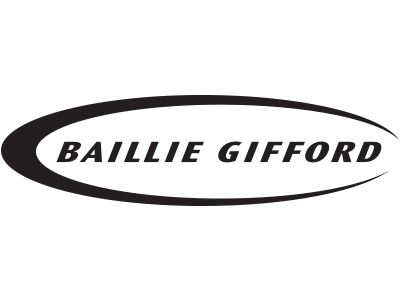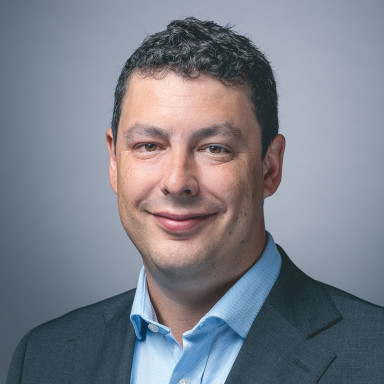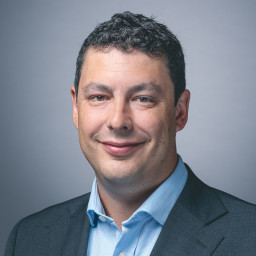The managers have more than four decades of combined experience in the industry and are supported by the vast resource and expertise of Baillie Gifford
We like their long term, disciplined investment process, which has helped the managers deliver good long-term performance, albeit with higher volatility than peers
We think this is a good option for diversified exposure to stock and bond markets across the globe
This fund features on our Wealth Shortlist of funds chosen by our experts for their long-term performance potential
How it fits in a portfolio
Baillie Gifford Managed invests across six major investment areas: shares in the UK, North America, Europe, Asia, the emerging markets, and bonds. It provides investors with a lot of diversification in one fund.
Shares tend to make up more of the fund than other investments in the same sector and investors can expect that to continue over the long term. The average amount invested in shares will be around 75%. The fund also has a bias towards investing in companies that have potential for significant growth into the future.
The combination of the amount invested in shares and the type of companies the managers like to invest in means we consider the fund to be a more adventurous option than many of its peers. We therefore expect more ups and downs in the value of this fund over the short term, and investors should be aware of the potential for the fund to be highly volatile.
The fund could boost the growth potential of a more defensive investment portfolio with a focus on bonds or provide exposure to companies with the potential for long-term growth across the globe.
Manager
Iain McCombie and Steven Hay have been the fund's lead managers since November 2012. McCombie specialises in UK equities and joined Baillie Gifford in 1994. Hay joined in 2004 and is a fixed income specialist.
McCombie and Hay have the support of six other experienced investors who are all experts in their fields. They are representatives of the fixed income, US, Europe, emerging markets and developed Asia equity teams. The managers can also draw upon the wider team of analysts at Baillie Gifford to help with additional research, challenge and analysis.
While McCombie and Hay have other fund management responsibilities, there is a lot of overlap in the work involved, meaning they spend most of their time managing investments. The use of other experts within the business to pick shares and bonds for the fund is also beneficial for the fund.
Meet the manager
Process
The managers like to keep things simple. They tend to invest around 75% of the fund in shares because they think shares will be the main driver of returns over the long run. The managers set a lower limit of 65% to be invested in shares and an upper limit of 85%. The rest is invested in bonds and cash with the aim to dampen volatility and add diversification. The bond part of the fund is made up of government and company bonds.
The shares section of the portfolio is managed in line with Baillie Gifford's growth-focused investment philosophy. The managers look for high-quality companies with clear and sustainable advantages over the competition. They consider a variety of factors, such as how fast the industry is growing, how the company's pricing structure works, how easily their products or services could be copied and how loyal customers tend to be. They also consider the firm’s financial stability, the quality of the management team, and whether senior managers' interests are aligned with long-term shareholders.
The managers invest globally in shares and bonds, which adds diversification. The proportion invested in different regions varies over time and depends on where the managers feel the best opportunities are. The managers invest some of the fund in emerging markets though, which adds risk.
At a high level, the team haven’t significantly changed the amount invested in shares and bonds over the last 12 months. Overall they have slightly reduced the amount they have invested in shares and increased the amount in bonds. At the end of February 2025, the fund had 77.7% and 21.4% invested in shares and bonds respectively. The rest of the fund is held as cash. The managers tend to invest in companies for longer term, which means changes aren’t made too often. That said, the managers will make changes depending on the opportunities available.
Recent additions to the fund are UK food producer Cranswick and supplement maker Applied Nutrition Protein. On the other hand, the team have recently sold their investments in Mettler Toledo and Eurofins.
The bond section of the fund invests in government bonds as well as investment grade and higher-risk, high-yield corporate bonds. While bond yields are higher now than they have been for some time, the team continue to believe that on a long-term view, company shares offer better value. Please note that the managers can also invest in derivatives, which increases risk if used.
Typically around 5%-10% of the fund is held in cash. This acts as a cushion when other assets decline in value and can also provide a source of funding for the managers when buying opportunities arise. The team have put this cash to work in recent years, meaning the amount invested in cash is notably lower than in the past.
Culture
Baillie Gifford is an independent private partnership founded in 1908. It's owned by partners who work full time at the firm. This ownership structure means senior managers have a vested interest in the company, and its funds, performing well.
We think this has helped cultivate a culture with a long-term focus, where investors' interests are at the centre of decision making. We also like that fund managers are incentivised in a way that aligns their interests with those of long-term investors and should retain talented managers.
ESG Integration
All of Baillie Gifford’s funds are run with a long-term investment horizon in mind. The firm’s fund managers see themselves as long-term owners of a business, not short-term renters. So, assessing whether society will support, or at the very least, tolerate, the business model over the long term, and whether management will act as good stewards of shareholders’ capital is an important part of the investment process.
Dedicated ESG analysts sit with and report into their respective investment teams, and the firm’s ESG efforts are supported by a dedicated Climate and Core teams. Individual investment teams are responsible for voting decisions and engagement for the companies they invest in. Investment in controversial weapons and cannabis is prohibited across the firm.
The firm reports all its voting decisions and provides rationale in situations where it votes against management or abstains, in a detailed quarterly voting report. There is also a quarterly engagement report which details the companies engaged with, and the topic discussed, and further engagement case studies are available on the website. All this information is brought together in the firm’s annual Investment Stewardship Activities report.
Baillie Gifford courted controversy in 2024 when it left the Net Zero Asset Managers’ Initiative, a group of asset managers that have committed to achieving net zero carbon emissions by 2050. They also left the Climate Action 100+ collaborative engagement scheme. We view this as a disappointing backward step, but are encouraged that the group’s net zero and engagement related commitments remain unchanged.
For the avoidance of doubt, this fund is not managed to a specific sustainable or ESG mandate.
Cost
This fund has an ongoing annual charge of 0.43%, but we've secured HL clients an ongoing saving of 0.18%. This means you pay a net ongoing charge of 0.25%. We think this is an attractive price to access a team we hold in high regard.
The fund discount is achieved through a loyalty bonus, which could be subject to tax if held outside of an ISA or SIPP. The HL platform fee of up to 0.45% per year also applies, except in the HL Junior ISA, where no platform fee applies.
Performance
The fund has performed better than the average of funds in the same sector over the long term. Since McCombie and Hay took over in November 2012, the fund has returned 172.28%* versus the IA Mixed Investment 40-85% sector average return of 115.33%. Past performance is not a guide to the future.
The managers tend to invest more in shares than many other mixed-asset funds, so we expect the fund to perform well compared to peers when stock markets rise, but lag behind when markets fall.
The fund’s performance profile over the last 12 months has been much more in line with expectations when compared to the period from the start of 2020 to the end of 2022. The period during and immediately after covid resulted in extreme performance, with some significant growth followed by material losses. While the fund has continued to experience more ups and downs than the IA Mixed Investment 40-85% sector, these have been less extreme more recently.
The fund outperformed the sector average over the 12 months to the end of February 2025, returning 11.05% compared to the sector average return of 9.81%. Within the investments in shares, those in the US added most value, with notable positive returns from shares in the UK and Emerging Markets too. At a high level, all of the asset classes provided positive returns, however bonds and shares from Asia had the smallest impact on the fund’s performance.
In terms of stock specifics, NVIDIA, The Trade Desk and TSMC were some of the strongest contributors to performance. All three companies benefited from the continued strong performance of the technology sector globally.
However healthcare companies Moderna and Novo Nordisk both lost value for the fund. Healthcare as a whole has struggled compared to other sectors which has been a headwind to these shares. Samsung has also performed poorly for the fund.
It’s good to see the fund outperform the peer group over the last 12 months. But investors should be aware that this fund has the potential to have lots of ups and downs over the short-term and that a long-term time horizon is important when investing in the fund.
Feb 2020 To Feb 2021 | Feb 2021 To Feb 2022 | Feb 2022 To Feb 2023 | Feb 2023 To Feb 2024 | Feb 2024 To Feb 2025 | |
|---|---|---|---|---|---|
Baillie Gifford Managed | 39.52% | -11.74% | -6.08% | 6.77% | 11.05% |
IA Mixed Investment 40-85% | 10.65% | 4.30% | -1.13% | 6.26% | 9.81% |


